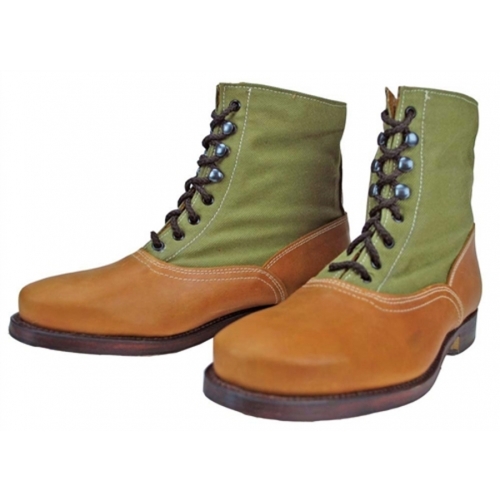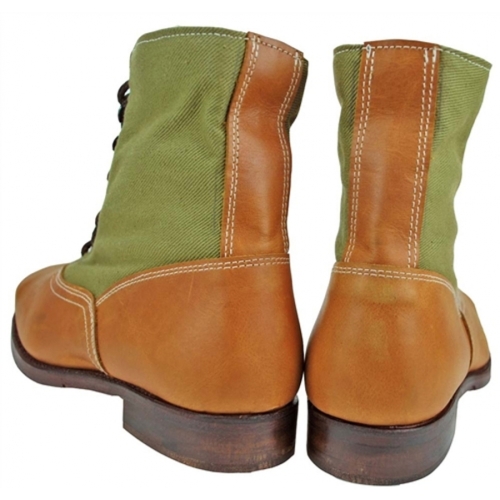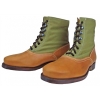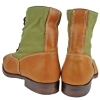WWII German Afrika Korps DAK Tropical Low Boots with hobnails
SKU: GERMAN WWII AFRIKA KORPS TROPICAL LOW BOOTS W HOBNAILS
Original/Reproduction: Reproduction
Availability: In-stock
Manufacturer:
Date Manufactured:
Model: Deutsches Afrikakorps
Size / Dimensions: 11
Materials / Construction: Leather, Steel, Canvas
Condition: New
Price: $175.00
Seller Type: WW2C
Seller ID: JMW
Return Policy: 3-day inspection and return policy on used guns and accessories.
Description
German Afrika Korps Tropical Low Boots with hobnails. Totally Handmade, Genuine Tan Leather, Olive Canvas, Stainless Steel Hobnails, Nylon Laces, Eyelets & Metal Hooks, Shoe And Heel Plate.
History
During World War II, the German Afrika Korps (Deutsches Afrikakorps or DAK) used a variety of equipment and uniforms specially designed for the desert conditions of North Africa. One of the key components of their uniform was the tropical low boot, commonly referred to as "DAK boots." These boots were designed to be more suitable for desert environments than standard leather boots.
The DAK tropical low boots had several distinctive features:
-
Material: These boots were typically made of canvas or lightweight leather, which made them more breathable and comfortable in the hot desert climate.
-
Color: They were often tan or sand-colored to blend in with the desert environment.
-
Hobnails: Many of these boots had hobnails on the soles. Hobnails are small metal studs or nails embedded in the sole of the boot, which provide better traction on sandy or rocky terrain.
-
Ankle Support: The boots usually had a lace-up design that provided good ankle support, which was essential for soldiers navigating uneven desert terrain.
-
Gaiters: German soldiers often wore canvas gaiters to protect the lower part of their legs and keep sand out of their boots.
These boots were practical for the conditions in North Africa, where standard leather boots would have been less suitable due to their tendency to become hot and uncomfortable in the desert heat. The hobnails on the soles helped soldiers maintain stability while moving on sandy and rocky surfaces.




